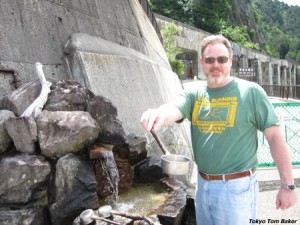Life After JET: Randy Higashi
By Jon Dao(Toyama-ken, 2009-12) for his podcast Discussions with Dao. Jon works as a speech coach and personal trainer.
The third appearance by former Toyama JET Randy Higashi. Unlike most of the other returnees I know, Randy actually went back to Japan for another two year stint. In this episode, we spend a lot of the discussion comparing the two experiences. Be sure to follow Randy on Instagram and check out the Takkomachi Facebook Page!
Why go back again? (1:20)
Which stay in Japan was better– the first or second? (8:36)
“Those 4 years in #Toyama built me as a person. It built me as a person– to be a tougher person. I thank my time for that.” – @rhigashi
— Jon Dao (@CommDao) August 23, 2016
How does it feel to come back a second time? (10:10)
How can you tell going back to work in Japan is a good decision or not? (12:57)
Did you see unrealistic expectations and fandom of Japan from ALTs? (16:46)
The Japanese Office Culture (19:40)
Fan Question (24:40
Don’t Leave Your Cleaning/Packing Up Til the End (30:30)
Omiyage Again (38:02)
https://www.instagram.com/p/BAeJ7HqS7tt/
Around Japan in 47 Curries: Toyama water
Tom Baker (Chiba, 1989-91) is writing a 47-part weekly series of posts on his Tokyo Tom Baker blog, in which he samples and comments on a curry from a different prefecture each week. Here’s an excerpt from his eighth installment, about Toyama Prefecture.
The Kurobe River is short but steep. It runs only 85 kilometers from Mt. Washiba in Toyama Prefecture, but it falls nearly 3 kilometers over that distance. Where it empties into the Sea of Japan, it has created an alluvial fan where the town of Kurobe stands. Because of its steep fall, the river was a good candidate for a hydroelectric project. The Kurobe Dam, Japan’s tallest at 186 meters, was built across it in a major postwar construction project from 1956 to 1963.
Although most famous as the site of an engineering feat, the Kurobe River is also known for the quality of its water, especially the cold springs that bubble up in the coastal town of Kurobe after filtering through the alluvial fan. It’s called Kurobe Meisui—literally, Kurobe’s famous water.
Today, I tasted one of several varieties of Kurobe Meisui curry – a black “soup curry” made with the famous water…
I’ll Make It Myself!: “Tanabata Beer Festa Toyama 2012”
L.M. Zoller (CIR Ishikawa-ken, Anamizu, 2009-11) is the editor of The Ishikawa JET Kitchen: Cooking in Japan Without a Fight. A writer and web administrator for The Art of Travel (formerly The Art of Japan: Kanazawa & Discover Kanazawa), ze also writes I’ll Make It Myself!, a blog about food culture in Japan, and curates The Rice Cooker Chronicles, a series of essays by JETs and JET alumni on the theme of cooking/eating and being alone in Japan.
New Rice Cooker Chronicles submissions always welcome. Just e-mail it to jetwit [at] jetwit.com.

The Tanabata Beer Festa Toyama, held the first full weekend of July each year in Toyama City, Toyama, is one of Hokuriku’s only beer festivals. I hopped the train south with a couple of our friends for an afternoon of craft beer. I hadn’t been to a beer festival since I left Michigan three years ago, so I was beyond thrilled.
What does one drink when confronted with 20 breweries’ worth of Japan’s finest craft beer? Make a game plan. When I attended the Michigan Brewers’ Guild Summer Beer Festival, I decided to only drink cherry beers, as those are much harder to get on draft than stouts. This time, after three years of living deprived of regular access to stouts, I circled 5 stouts I’d like to try, got a pizza for lunch, and set to work drinking.


